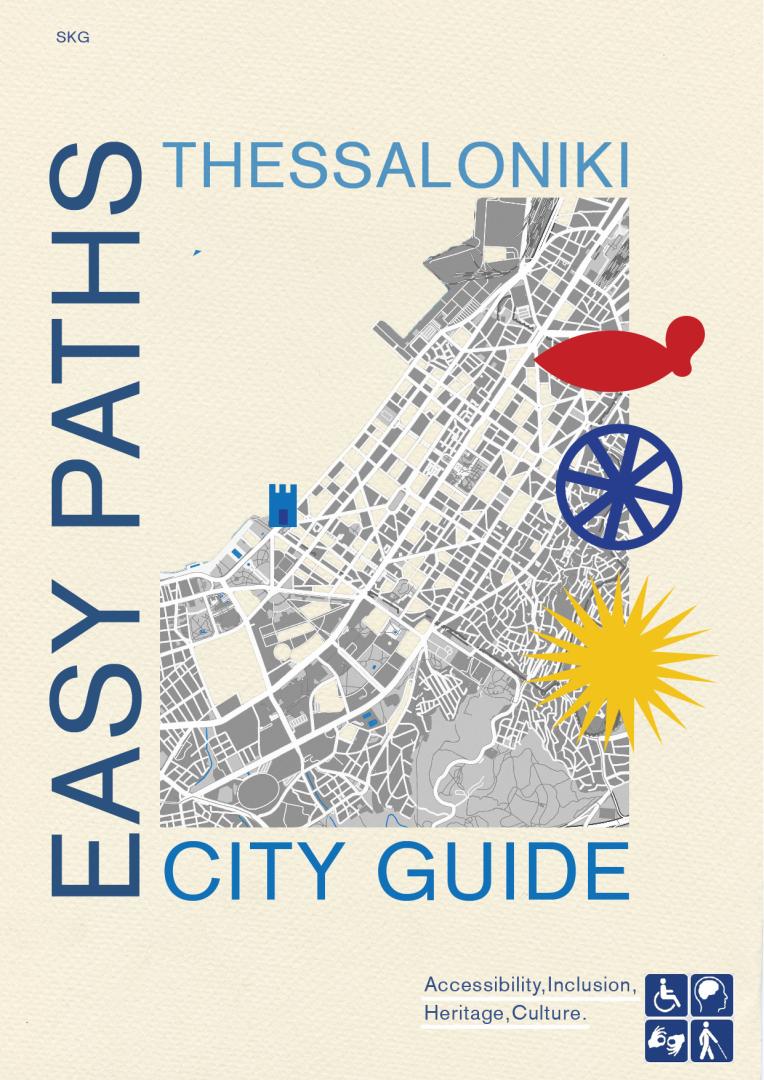EASY PATHS
Basic information
Project Title
Full project title
Category
Project Description
A small developing idea of a multimodal guide (webpage, online app, social media, e-book, audio guide) for Greek cultural heritage environments developed for both Greeks and non-Greeks disabled visitors as they are often excluded from touristic and cultural spaces. This guide is built around disabled visitors' perspectives and evaluations and gives priority to artists with disabilities. The project has been acknowledged by an EU program, and my objective is to obtain funds to fully develop it.
Geographical Scope
Project Region
Urban or rural issues
Physical or other transformations
EU Programme or fund
Which funds
Description of the project
Summary
This guide aims to collect and list the accessible places of cultural interest in Thessaloniki. Its aim is to attract and assist visitors with disabilities and their families from Greece and abroad.
It includes information about the city, arrival and travel instructions, such as directions to Thessaloniki from the main routes, airports, etc., points of interest, cultural sites and maps. In accordance with Articles 30 and 32 of the Convention on the Rights of Persons with Disabilities ( UN ), a culturally accessible electronic version of the guide is provided.
The guide's structure and simplified language are intended to appeal to younger readers without alienating older readers. This guide will combine the promotion of the cultural heritage of Thessaloniki with the promotion of the social inclusion of people with disabilities and thus also with the reduction of social inequalities.
Key objectives for sustainability
The guide will reinforce sustainable tourism and local recycling processes in order to lower the negative impact and the effects produced by the physical tourism that the project itself promotes.
This will be accomplished by collaborating with local small restaurants, café, and bars that meet all accessibility requirements and use locally sourced goods, and advertising their facilities and work.
Furthermore, the goal will be pursued by developing and mapping ecological short routes from the city center to the different sights, this way discouraging the use of private transport (e.g. car, taxi, etc.). Moreover, advertisement and sharing of the project will be carried out throughout the distribution around the city (in museums, info kiosks, public offices, etc.) of recycled paper cards with the QR code of the guide, that will allow visitors to easily and quickly navigate it and access the information necessary for them.
Key objectives for aesthetics and quality
The guide's internal structure gathers and organizes the information in the text to provide an enjoyable experience to visitors who may feel overwhelmed and confused with the amount of information present in other guides, most of which do not focus on people with disabilities.
We accomplish a comprehensive visually attractive and multimodal outcome that can be experienced with multiple sensory processes. The. visual part combines beautiful pictures of the city with short text, new maps designed by young people with vibrant colors and simple directions.
Key objectives for inclusion
The key features of the guide related to inclusion begin with its design. The basic idea is to enable people with disabilities to design and co-create a project that is meaningful to them. For this reason, we invited institutions and organizations of people with disabilities to design the cover.
The information in the guide will largely come from visitors with disabilities who evaluate the services and accessibility of the specified places based on their first-hand experiences.
There will also be ongoing interaction with volunteers who have agreed to help create the guide by offering advice and opinions and pointing out obstacles in the city.
It will be made available in digital format, culturally accessible in accordance with Articles 30 and 32 of the Convention on the Rights of Persons with Disabilities UN. The maps will be available for download so that they can be used without internet access.
Physical or other transformations
Innovative character
These three aspects are mutually influenced in this project since we believe that there is no sustainability without inclusiveness. Also, we state that aesthetic is a necessary part of all inclusive sensory processes because beauty, art, and culture can be experienced differently and subjectively, so we take care of all the guide's details and invite a wider group of collaborators with the aim of exploring the diversity of perspectives, styles, and methods. In our perspective, these three elements create a virtuous circle of theories and practices: making cultural places accessible to diverse people, while also raising awareness about the importance of sustainable tourism and economy in Greece, by reinforcing connections with local businesses that share the same values and trying to make this experience pleasurable for all visitors will increase the sense of belonging to the wider local community.

